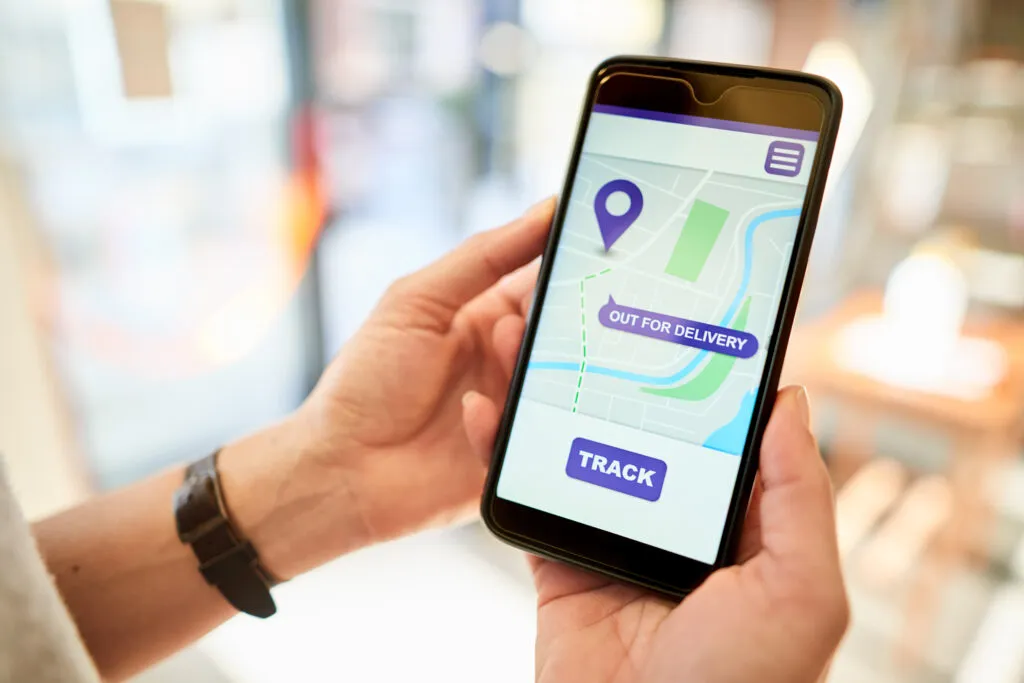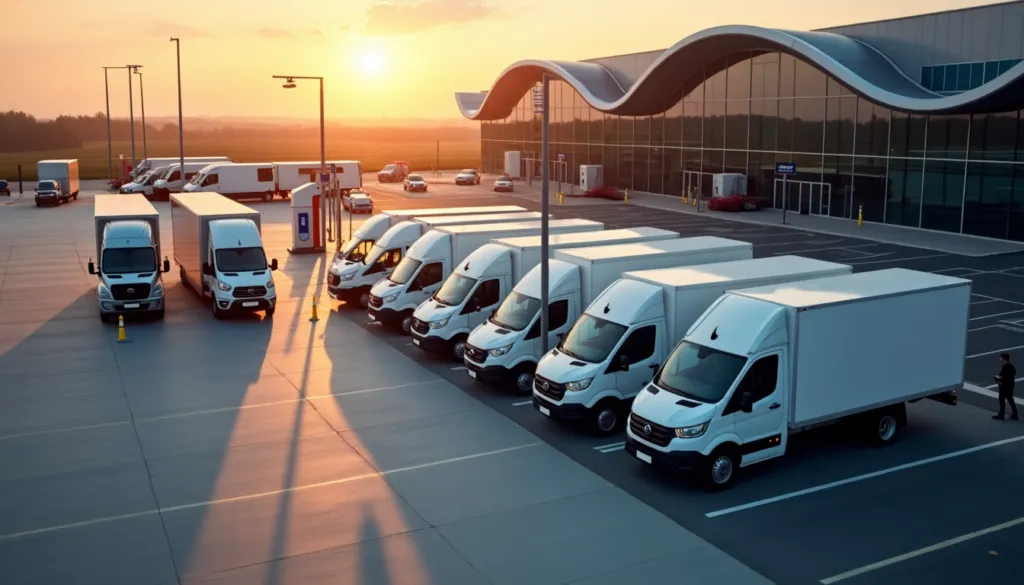
Get home early with RoadWarrior.
Enter your stops, optimize your routes, manage your team – quickly and efficiently.
Try RoadWarrior free for 7 days
Try free for 7 daysIn the ever-evolving world of the gig economy, Instacart driver pay has become a topic of keen interest for many independent contractors. As a leading grocery delivery service, Instacart has transformed the way people shop for essentials, creating opportunities for those seeking flexible work arrangements. Understanding the intricacies of compensation in this field is crucial for both current and prospective drivers looking to maximize their earnings in the competitive delivery service landscape.
Types of Instacart Shoppers
In this article, we will be primarily focusing on full service shopper pay. Instacart full service shoppers accept orders via the Instacart shopper app, shop at the local stores and delivers the order to the final destination. In store shoppers take orders via the Instacart app, fulfill the order and place the order in the designated area for customer pick up. Full service shoppers earn more money than in store shoppers because there is more work involved, but both types of shoppers are able to earn tips.
The Evolution of Instacart Full Service Shopper Pay: 2023 vs 2024
Changes in base pay
Instacart driver pay has undergone significant changes in recent years, reflecting the company’s efforts to provide fair compensation for the independent contractor. In 2019, Instacart made a notable adjustment to its base pay structure, increasing the minimum batch pay from USD 3.00 to USD 7.00-USD 10.00 for full-service batches. This change has had a lasting impact on shopper earnings, carrying through to 2024.
The company’s commitment to fair compensation is evident in its statement to shoppers: “We’re launching new measures to more fairly and competitively compensate all our shoppers.” This approach has resulted in a higher guaranteed compensation floor for drivers, addressing previous concerns that compensation didn’t always match the effort put forth by shoppers.
New incentive structures
Instacart has introduced several new incentive structures to enhance full service shopper earnings. The current pay model takes into account various factors affecting shopper pay, including order difficulty, delivery distance, and batch incentives. Quality bonuses are now awarded for every five-star review received, encouraging shoppers to provide excellent service.
Peak boosts have been implemented to reward shoppers who work during high-demand periods, allowing them to earn extra money during busy times. Additionally, Instacart has maintained its policy of ensuring full service shoppers keep 100% of their customer tips, a practice that has become a standard in the grocery delivery industry.
To further support its workforce, Instacart introduced a temporary fuel surcharge of USD 0.40 per order in March 2022 to help offset rising gas prices. This fee is paid directly to drivers, demonstrating the company’s responsiveness to changing market conditions that affect shopper expenses.
Impact of market conditions
Market conditions have played a crucial role in shaping Instacart driver pay. The customer demand for grocery delivery services skyrocketed during the pandemic, leading to increased opportunities for shoppers. However, as the market has evolved, the Instacart pay structure had to adapt in order to remain competitive in the gig economy landscape.
The company’s focus on creating a rewarding and flexible experience for its community of approximately 600,000 shoppers is evident in its ongoing adjustments to the pay structure. These changes aim to balance fair compensation with the need to maintain a sustainable business model in the competitive delivery service market.
As Instacart continues to evolve its pay structure in 2025, drivers can expect ongoing refinements to the compensation system. The company’s commitment to transparency and fair pay practices suggests that it will continue to adapt to market conditions and shopper feedback, ensuring that Instacart remains an attractive option for independent contractors in the grocery delivery sector.
Strategies for Efficient Instacart Shopping
Mastering the art of efficient Instacart shopping is crucial for the independent contractor looking to maximize their earnings in the grocery delivery service. By implementing smart strategies, shoppers can boost their productivity and complete orders more quickly, ultimately increasing their potential income.
Using the RoadWarrior Flex app for route optimization
One of the most effective tools for Instacart drivers is the RoadWarrior Flex app, which specializes in route optimization. This cloud-based multi-stop route planner is designed to streamline delivery operations and save time and money. With RoadWarrior Flex, shoppers can upload their stops instantly and optimize multiple routes to minimize travel time and distance.
The app’s advanced algorithms take into account real-time traffic, drop-off priorities, time windows, and service time to calculate the most efficient routes. This optimization allows drivers to complete more deliveries in less time, potentially boosting their earnings. Additionally, the app’s GPS tracking feature enables real-time monitoring of delivery progress, allowing for quick adjustments if needed.
Mastering store layouts
Knowing the layout of stores and staying informed about stock levels is essential for efficient Instacart shopping. Here are some tips to help shoppers navigate stores more effectively:
- Explore stores beforehand to learn the location of commonly purchased items.
- Develop a mental map of store aisles and sections for quick product location.
- Check store apps or websites for updated product information and promotions.
- Communicate with customers to understand their preferences and special requests.
By implementing these strategies, shoppers can significantly reduce the time spent searching for items, leading to faster order completion and improved productivity.
Effective communication with customers via the Instacart Shopper app
Providing excellent customer service is key to success as an Instacart shopper. Good communication is at the heart of this service and has a significant impact on customer satisfaction and ratings. Here are some tips for effective communication:
- Send initial greeting, on-the-way, and thank-you texts to keep customers informed.
- Provide photos for replacement options when items are out of stock.
- Inform customers about produce quality and ask for their preferences.
- Communicate with customers about out-of-stock items and potential alternatives.
- Be prompt in responding to customer messages and addressing their concerns.
By maintaining clear and friendly communication, shoppers can build a strong reputation within the Instacart community, potentially leading to more orders and higher ratings.
Implementing these strategies for efficient Instacart shopping can help independent contractors optimize their performance in the grocery delivery service. By using tools like RoadWarrior Flex for route optimization, mastering store layouts, and maintaining effective customer communication, shoppers can increase their productivity and potentially boost their earnings in this competitive field.
Understanding Instacart’s Rating System
Instacart’s rating system plays a crucial role in determining a shopper’s success and earning potential in the grocery delivery service. This system is designed to ensure quality service for customers while providing opportunities for independent contractors to maximize their income. However, it can also present challenges for shoppers who find themselves struggling with less-than-perfect ratings.
How ratings affect pay
The impact of ratings on an Instacart shopper’s pay is significant. Shoppers with higher ratings receive priority access to available batches, which often translates to higher-paying orders. This system creates a competitive environment where maintaining a high rating is essential for consistent earnings.
Instacart uses a rating scale of 1 to 5 stars, with an average rating of 4.7 or above considered optimal for batch prioritization. Even a slight drop below this threshold can result in a noticeable decrease in available orders and potential earnings. For instance, a shopper’s average earnings could potentially drop from USD 25.00 per hour to below minimum wage due to a lower rating.
Maintaining a high rating
To maintain a high rating and ensure access to better-paying batches, Instacart shoppers should focus on providing excellent customer service. This includes:
- Communicating effectively with customers about replacements and out-of-stock items
- Ensuring order accuracy and timeliness
- Handling groceries with care during shopping and delivery
- Being responsive to customer messages and concerns
It’s important to note that Instacart calculates ratings based on the last 100 ratings received, not the last 100 orders completed. This change was implemented to provide a more accurate representation of a shopper’s performance, as not all customers leave ratings after each order.
Dealing with unfair ratings
Instacart has implemented several measures to help shoppers deal with potentially unfair ratings:
- Automatic removal of the lowest rating once a shopper has received 100 ratings or more
- Removal of low ratings associated with issues beyond the shopper’s control, such as app outages or severe weather conditions
- Forgiveness for low ratings related to Instacart-suggested replacements when customers are unresponsive
Despite these measures, shoppers may still encounter situations where they receive low ratings for reasons beyond their control. In such cases, it’s crucial to continue providing excellent service to accumulate more positive ratings and improve the overall average.
Instacart’s rating system, while designed to maintain service quality, has faced criticism for potentially creating undue stress for shoppers. The company continues to evaluate and adjust its policies to strike a balance between customer satisfaction and fair treatment of its independent contractors in the competitive delivery service landscape.
Future Outlook for Instacart Full Service Shoppers Pay
As the grocery delivery landscape continues to evolve, the future of Instacart driver pay remains a topic of keen interest for independent contractors. The company’s ongoing efforts to balance fair compensation with sustainable business practices suggest a dynamic future for earnings potential in this sector.
Potential policy changes
Instacart has demonstrated a willingness to adapt its pay structure in response to market conditions and shopper feedback. The company’s commitment to transparency and fair pay practices indicates that future policy changes are likely to focus on creating more opportunities for shoppers to increase their earnings. These changes may include refinements to the batch payment system, which currently combines batch incentives and delivery distance pay.
One potential development could be the introduction of more nuanced pay scales that better reflect the complexity of orders. For instance, Instacart might consider implementing a tiered system that offers higher base pay for orders requiring specialized skills or handling particularly challenging deliveries. This approach could help to address concerns about compensation for more demanding tasks.
Impact of automation and technology
The integration of automation and technology is poised to have a significant impact on Instacart driver pay. While there have been reports of Instacart exploring automated fulfillment centers, the immediate future is more likely to see technology enhancing rather than replacing human shoppers.
Advancements in route optimization and order batching algorithms, such as those used in the RoadWarrior Flex app, are likely to improve efficiency for drivers. These technological improvements could lead to more deliveries completed in less time, potentially increasing earnings for efficient shoppers. Additionally, Instacart’s investment in improving inventory prediction and real-time item availability models could reduce the time shoppers spend searching for out-of-stock items, further boosting productivity.
Predictions for earnings potential
The earnings potential for Instacart drivers in the coming years is expected to remain competitive within the gig economy. Current estimates suggest that drivers can earn between USD 18.00 and USD 26.00 per hour, including base pay and additional compensation such as tips and bonuses. However, this range may shift as the company continues to refine its pay structure.
Factors that could positively influence future earnings include:
- Increased demand for grocery delivery services, particularly during peak times and in high-demand areas.
- Enhanced promotional opportunities, such as the recently introduced peak earning times feature.
- Improved customer tipping practices, potentially encouraged by Instacart’s efforts to highlight shopper efforts during challenging conditions.
Conversely, challenges to earnings growth may arise from:
- Market saturation in certain areas, leading to increased competition among shoppers.
- Potential changes in consumer behavior post-pandemic, which could affect order volumes.
- Ongoing discussions about gig worker classification and benefits, which may impact the overall compensation structure.
As Instacart continues to navigate the competitive delivery service landscape, drivers can expect ongoing adjustments to the pay structure aimed at maintaining an attractive platform for independent contractors while ensuring the company’s long-term viability in the grocery delivery market.
Conclusion
The gig economy landscape continues to evolve, and Instacart’s driver pay system is no exception. Instacart has shown a commitment to adapting its compensation structure to reflect market conditions and driver feedback. This ongoing refinement aims to strike a balance between fair pay for independent contractors and the company’s need for a sustainable business model in the competitive grocery delivery sector.
Looking ahead, Instacart drivers can expect further changes to boost their earning potential. The integration of advanced technologies, like improved route optimization and inventory management systems, may lead to increased efficiency and higher earnings for savvy shoppers. While challenges such as market saturation and shifting consumer behaviors exist, the overall outlook for Instacart driver pay remains promising for those who master the art of efficient shopping and maintain high customer ratings.
FAQs
What is the average earnings potential for an Instacart Shopper in 2025?
As of September 13, 2024, the typical hourly wage for an Instacart Shopper in the U.S. is approximately $18.33.
Can you describe the updated pay structure for Instacart drivers?
Instacart has revised its payment system by eliminating the previous $10.00 minimum (including tips). The new guarantees set by Instacart have raised the minimum Batch Payment from $3.00 to a range of $7.00 to $10.00 for full-service batches and $5.00 for delivery-only batches.
Has there been a decrease in pay for Instacart drivers recently?
Yes, Instacart has reduced the minimum base pay for delivery drivers from $7.00 per order to $4.00, making drivers more dependent on tips to earn a sufficient income.
Did Instacart make changes to their payment rates for drivers?
Instacart has confirmed a reduction in the payment rate for delivery workers, from $7.00 to $4.00. However, the company claims that drivers can earn more through tips and that it provides guaranteed batch earnings that are twice as high as its competitors.


